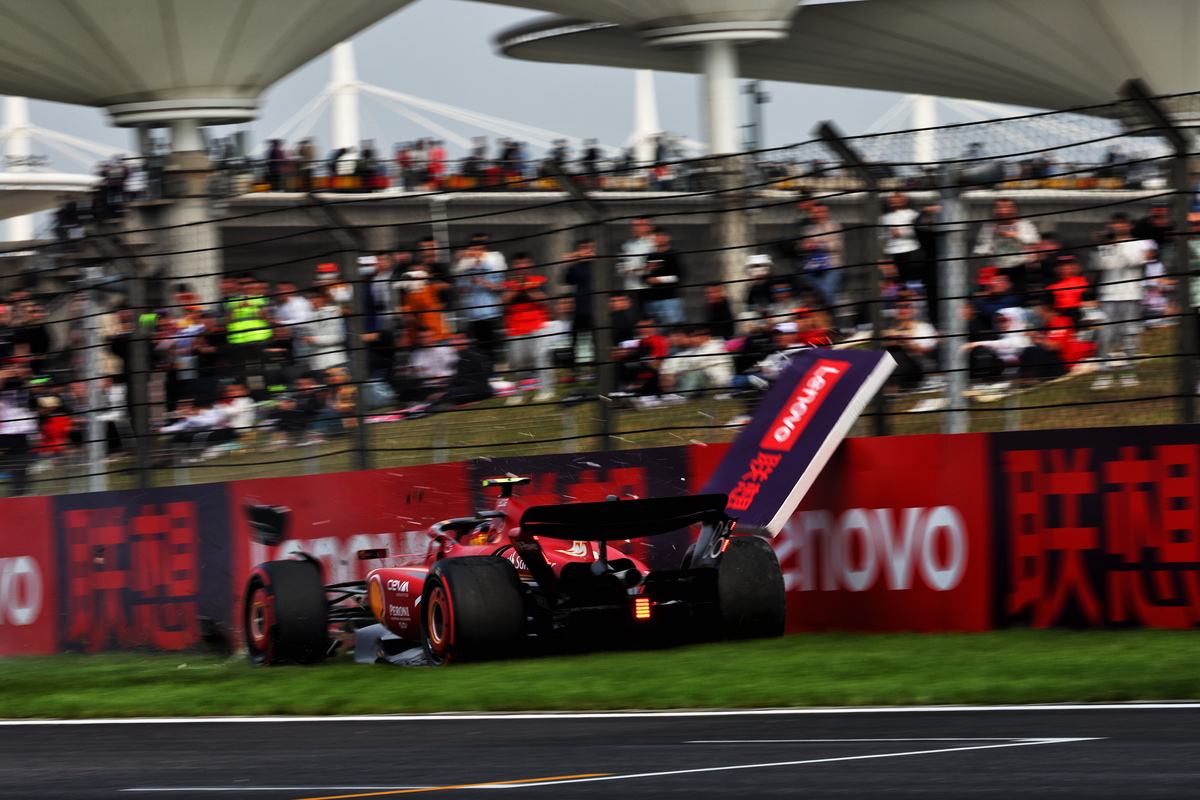

Aston Martin protested the qualifying result, citing Article 39.6 of the Sporting Regulations.
That rule specifically relates to cars stopping on track and being unable to continue in the session.
Formula 1 Sporting Regualtions, Article 39.6;
Any driver whose car stops on the track during the qualifying session or the sprint qualifying session shootout will not be permitted to take any further part in that session.
Carlos Sainz spun during Qualifying 2 and tagged the wall exiting Turn 2, where he came to a rest, his front wing having been torn from the Ferrari in the impact.
In Full: Read the complete stewards ruling
Race control quickly threw a red flag to cover the stricken car before Sainz was able to recover it back to the pits.
Aston Martin argued that Sainz stopped, drew a red flag, and had to re-fire his Ferrari, which constituted a car that had stopped on track.
Officials did not agree.
“It is clear that the plain language of Art. 39.6 suggests that so long as a car “stops” on the track during a qualifying session, that car should not be permitted to take further part in the session,” the stewards noted.
“However, it was clear from the examples cited by a number of the team managers present and the FIA, that this was not how this rule was applied by the teams and the FIA in the past.
“The FIA team explained that so long as the car was able to restart and continue from a stopped position within a reasonable time, that would ordinarily be permitted.
“The typical time would be around 30 seconds, though that varied depending on the circumstances.
“The teams themselves said that they had previously attempted to agree what they considered to be a reasonable length of time before a car would be considered “stopped”.
“Unfortunately, they were not able to come to a final agreement on the maximum time allowed.
“Aston also accepted that there were prior examples of cars stopping on track and being allowed to continue, despite the plain wording of Article.39.6.
“However, they felt that stopping, in this case, for 1minute and 17 seconds was too long and therefore should not have been permitted.
“Absent clear guidance in the regulations or an agreed, established practice of when too long was too long, we considered that this was a discretion best left to Race Control.”
It added: “In the above circumstances, taking into account the numerous examples where cars had stopped for different lengths of time and were permitted to restart and continue to participate in the session concerned, we considered that the decision taken by Race Control was not inconsistent with past practice nor in breach of Article 39.6.
“We considered that even if the plain wording of Article 39.6 warranted a more stark conclusion, the consistent practice in the sport to date did not warrant a setting aside of the discretion exercised by Race Control by us as Stewards.
“We accordingly dismissed the Protest.”
The incident highlights a weakness within the regulations that needs to be addressed.
The International Sporting Code, which underpins the Formula 1 Sporting Regulations, does not define ‘stop’, leaving it open to interpretation.
As such, it was left to the officials to determine whether or not the Ferrari driver had ‘stopped on track’.
Aston Martin was right to challenge the officials as, beyond a potential sporting gain, it highlighted the issue and offers an opportunity for it to be closed off in future.






















Discussion about this post